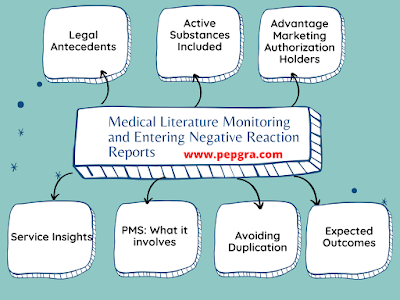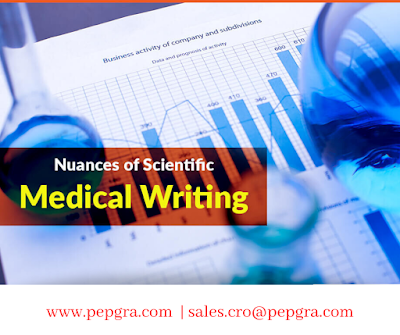Medical Literature Monitoring (MLM) and Entering Negative Reaction Reports | Pepgra
In Brief
- A novel process where European Medical Agency offers a new service.
- The service is focused around medical literature monitoring.
- This service is also a vital step to ensure that there is no duplication of negative reaction reports.
- This service came into effect from 1st September, 2015.
Service Insights:
The European Medicines Agency (EMA) on 12th May, 2015
presented a politician intimation of medical
literature monitoring services and
also proclaimed that adverse reaction reports would be not be required to be
entered within the EudraVigilance. the whole thing came into effect from 1st
September, 2015 onwards.
Following the announcement, the EMA has published an
inventory of active substances and also provided a regard to the journals which
will encompass this novel service. Initially, the service was poised to be
initiated by taking around a restricted number (50 active molecules) of active
substances from 1st July, 2015 and was alleged to be full-fledgedly implemented
by September, 2015. As per the EMA, a preset array of journals and reference
databases would be utilized for this service (Joshi, 2015). These journals /
databases would include:-
·
EMBASE
PMS: What it involves
Considering that the method of drug approval comprises of
phase I clinical trial , II and III trials, post
marketing trials are often mentioned as phase
IV clinical trials trials. PMS comprises of a scientific monitoring of
medicine and medical devices as they're utilized in actual real-world
scenarios. this is often in contrast to controlled clinical settings during
pre-marketing Clinical trials wherein the conditions of the study are strictly controlled
(David & Kim, 2019).
Avoiding Duplication
No doubt, medical also as scientific
literature is meant to be a serious source that gives information in terms
of recognizing any suspected incidence of negative drug reactions for drugs
that had been authorized within the European Economic Area (EEA).
Expected Outcomes
The
European Medical Agency executes the task of monitoring medical literature and
entering pertinent information into EudraVigilance with a view to;-
·
Improve the overall
efficiency in terms of reporting negative reactions.
·
Present the
pharmaceutical sector with a simplification.
·
Enhance the overall
quality of data by lowering the scope for duplication.
·
Undertake efforts to
ensure savings in resource for the pharmaceutical industry.
Legal Antecedents
Article
27 of Regulation (EC) No 726/2004 forms the background for the tasks of the
EMA. As per regulations, it has been stated that;
·
Selected medical
literature will be monitored by the Agency for reports pertaining to suspected
negative reactions to medicinal products that are inclusive of some specific
active ingredients. The Agency will also publish the list of active substances
that are presently being monitored and the relevant medical literature that
falls under their purview.
·
Pertinent information
derived from the chosen medical literature will be entered into the
EudraVigilance database by the Agency.
·
An in-depth guide will
be created by the Agency following due discussions with Member States,
Commission and concerned parties, with regards to monitoring medical and
scientific literature and entering the required information into the database
of EudraVigilance.
Active Substances Included
An extensive array of active substances which also
comprises of herbals, have been chosen on the basis of the medicinal product
information that has been provided to the EMA in tandem with Article 57(2), in
the second paragraph of Regulation (EC) No 726/2004.
Mainly a large number of
active substances that are known to exist in medicines and those for which a
large number of marketing authorizations which were provided to diverse
marketing authorization holders within the EEA fell under this service
(European Medicines Agency, 2020).
Advantage Marketing Authorization Holders
The introduction of this new service by the EMA
is bound to make a humungous positive impact mainly on marketing authorization
holders who exist and operate in the EEA. As per estimates, around more than
3,500 marketing authorization holders for substance groups stand to gain from
this service. In addition, marketing authorization holders in excess of 640 under the herbal substance group would also stand to gain an advantage through this move by the EMA (Joshi, 2015; European Medicines Agency, 2020).




Comments
Post a Comment